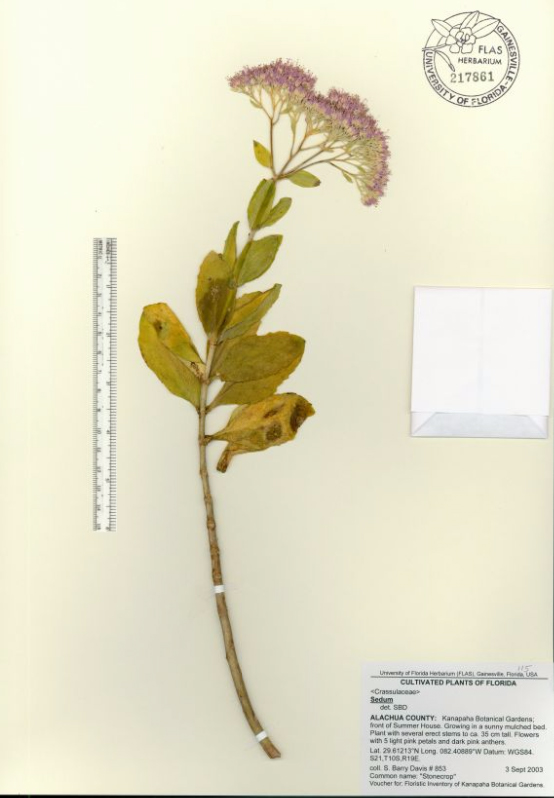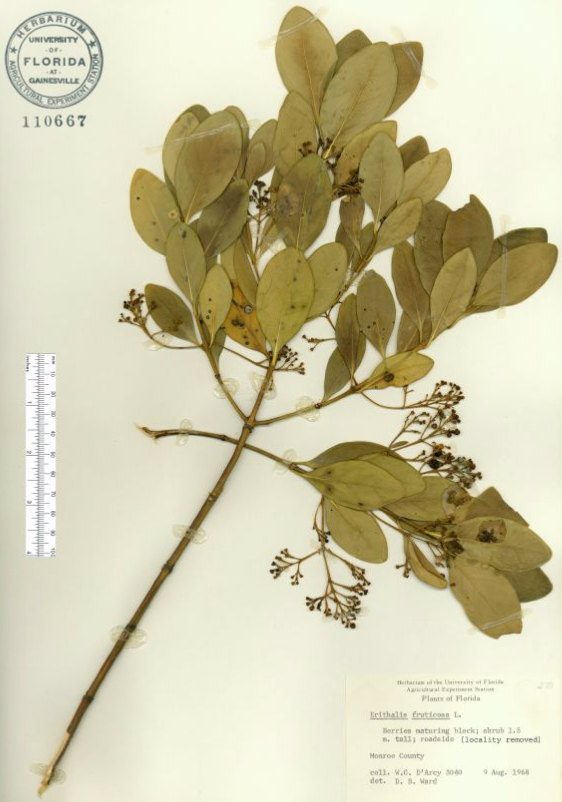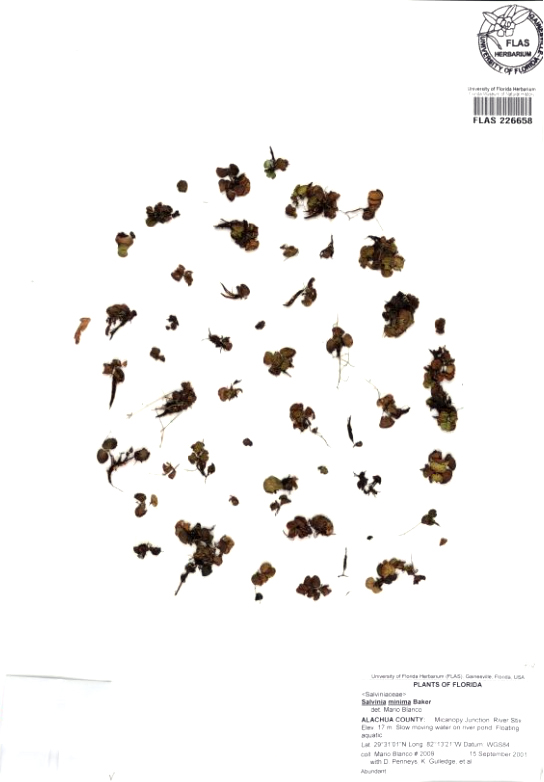Many folks seem to be under the mistaken impression that a herbarium is a place where herbs are grown.

Images by Florida Museum & University of Florida Herbarium
Actually, it’s a collection of plant specimens preserved, labeled and stored in an organized manner that facilitates access. You can think of it as a library of dried plant specimens used for both education and research. Typically, the plants are flattened, dried and mounted on uniformly sized, archival paper, but some herbaria also include mosses, algae, fungi or lichens in archival paper packets, seeds, wood sections, pollen, microscope slides, DNA extractions or jars of plant parts preserved in alcohol or glycerin.
Herbarium specimens are always accompanied by a label that indicates the location where the plant was growing, the collector and the date collected. Often the label also includes information about the appearance of the plant and the context or habitat where it was found. Each herbarium specimen is assigned a unique accession number, which functions like the catalog number of a book in a library.
The practice of collecting dried plants mounted on paper is attributed to the Italian physician and botanist Luca Ghini (1490-1556), and was spread over Europe by his students. At that time, such a collection of dried, mounted plant specimens was known as a hortus siccus (dry garden) or hortus hiemalis (winter garden). The word herbarium was originally used to refer to a book about medicinal plants. French physician and botanist Joseph Pitton de Tournefort (1656-1708) is credited with first applying the term herbarium to a collection of dried, pressed plants. In the earliest herbaria, sheets of pressed, mounted plants were bound into books. The famous Swedish naturalist and taxonomist Carolus Linnaeus (1707-1778), was the first to keep his specimens unbound, constructing a specialized cabinet with narrow, vertical rows of shelves on which stacks of herbarium sheets could be stored. Modern herbaria use cabinets modeled after those of Linnaeus. Care is taken to protect herbarium specimens from agents that can cause them to deteriorate, such as insects, light, humidity and fluctuations in temperature.

Images by Florida Museum & University of Florida Herbarium
In the earliest days, herbaria were built and maintained by physicians, most of whom were also botanists because they studied and relied upon plants as a means of treating illness. Today there are more than 3,000 herbaria worldwide, and most are associated with universities, museums, botanical gardens or other research institutions. The oldest extant herbarium, that of Ghini’s student Gherardo Cibo (1512-1600) is located in Rome and was established in 1532. The largest herbaria in the world (each with 7 to 9.5 million specimens) are located at the Museum of Natural History in Paris, the Royal Botanic Gardens, Kew, in England, the New York Botanical Garden and the Komarov Botanical Institute, in St. Petersburg, Russia.
Established in 1891, the University of Florida Herbarium, which is part of the Florida Museum of Natural History, is the oldest and most comprehensive herbarium in Florida with approximately half a million specimens. It is the fourth largest herbarium in the southeastern United States. The UF Herbarium contains about 273,000 vascular plants (including both pressed/mounted specimens and a seed collection), 160,000 bryophytes and lichens, 56,500 fungi and 15,300 wood samples. The collection includes specimens from every continent except Antarctica, but the geographic focus is circum-Caribbean (with an emphasis on Florida, the coastal plain of the southeastern U.S., Haiti, Costa Rica, Venezuela and Brazil).

Images by Florida Museum & University of Florida Herbarium
In addition, the UF Herbarium includes a library of 5,000 books, 50 journal titles, 10,000 reprints, 500 microfiche titles, 500 maps and 1,000 botanical illustrations. The UF Herbarium’s collections are actively growing; approximately 2,500 plant specimens and 200 library items are added each year. The growth, documentation and maintenance of the UF Herbarium are dependent on a team of scientists, student employees and dedicated volunteers.
Herbaria are essential to the work of botanists. Herbarium specimens are used to document the plant diversity of a particular geographic area, as a reference for identification, as a source of information about plant species (such as the habitats where they occur, when they flower and what chemicals they contain), as a validation or documentation of scientific observations, and as a source of DNA that facilitates our understanding of the evolution of plants and the processes by which new plant species arise. My work providing plant identifications and information to UF/IFAS extension and research faculty and the general public throughout Florida would not be possible without the fantastic resources of the UF Herbarium!
Learn more about the Herbarium at the Florida Museum.
Read Kew Royal Botanical Gardens’ “What is a Herbarium?”
Download Duke University Herbarium’s Linnaeus’ herbarium cabinet.